Sick of Being Stuck is reader-supported. When you buy through links on my site, I may earn a commission. Disclosure.
Last year, I finally busted through the tiny apartment bubble and rented a slightly larger place. (Little victories, ok?) After a series of itty bitty apartments, my modest home seemed like a mansion.
I was finally Scarlett O’Hara and I found my Tara.
Now, I have a kitchen with more than four square feet of counter space, so I can finally buy that damn KitchenAid. I have two sets of drawers and cabinets in my bathroom and even a spare bedroom.
In an effort to “create a home”, I worked to fill my space. Within a week, my beautiful Tara had turned into the season finale of Hoarders.
Before I knew it, my new place was full of throw pillows, wall art, knick-knacks, furniture, and kitchen appliances I never knew I “needed”. I blame TJ Maxx.
I was more stressed and overwhelmed than ever before. My space was chaotic and so was my mind.
I decided to declutter my life.
Get rid of the things I don’t need! Simplify my surroundings!
In the process, I learned a lot about myself.
I learned I am not Martha Stewart and I will never own a white couch.
I’ve learned just because it’s on sale doesn’t mean I need it. And I have learned that adulting is hard and all these other blogs make it look easy. Well, it’s 100% not. I will never tell you that it is.
What I am going to do, though, is tell you it’s not 100% shit. Follow along to learn exactly what I did, how I messed it up, and how to fix it.
With that in mind, these are my favorite 17 simple tips to declutter your life that actually helped me be successful in living with less. Whether you have a studio apartment or a hilltop McMansion, my experience might help clear a little clutter in your home and let you enjoy your space again.
Why Declutter Your Life?
Some say they like a mess – they know exactly where things are, even in their respective piles.
(Guilty.)
But, clutter in the home means clutter in the mind.
It has been psychologically proven that clutter causes stress. Clutter subconsciously fills our mind, making it harder to relax or focus.
Don’t believe me?
Fill your home with a bunch of crap. Then, try to host a dinner party or write a paper.
It’s practically impossible.
When your space is messy, it sends a mental signal to your brain that your work is never done. There is always something you could do, would do, or should do. This makes you less productive and more anxious in your everyday life.
This method is all about clearing crap.
Simplifying and decluttering doesn’t mean organizing your piles. It means physically getting rid of shit. Research proves living with less makes us happier.
Less stuff = less mess.
And less mess means you can easily find what you need, keep your space tidy, and keep your mind at ease.
Car keys? Got ‘em.
Bills? Paid and filed.
Your favorite boots? Right where they belong.
But… how do you do it? Where do you start? Here are a few of my favorite ideas to start to declutter your life, clear your mind, and enjoy living with less.
1. Declutter, Don’t Just Move Stuff Around
This first tip was an absolute revelation.
There is a difference between decluttering and organizing.
Declutter means getting rid of stuff, not just finding a fun way to store it.
If you keep all the same stuff and simply move it to a different room, you have only relocated the issue. True decluttering means that you should be removing more than you are keeping.
Take it to the dumpster, donation center, or garage sale. Wherever. Don’t just tidy up the junk drawer. Get rid of the junk completely.
2. Find Out What You Actually Use With the Big Brown Box Technique
We don’t realize how much stuff we actually have.
This method, called The Big Brown Box Technique, helps us see how much is too much.
Try these simple steps to discover what to throw out.
- Find a cardboard box about the size of a standard banker box.
- Fill the box with items from the area you’re decluttering.
- If you need something from the box, take it out and put it back in the cupboard, drawer, closet where it belongs.
- Anything left in the box after 30 days goes straight to the trash or donation center.
- Using this technique, I quickly discovered I had way too many spices, and honestly probably didn’t use half of them on a regular basis. I used my Big Brown Box to find out exactly what spices I needed and simplified my cupboard.
It’s not ideal to have large cardboard boxes in your home, I know, but stick with me. I promise it’s all worth it in the long run. And you can always shove the box out of the way in the meantime.
3. Make a “Maybe” Box
Let’s pretend you listened to my advice and you’re done with the Big Brown Box Technique. Now, you have a box of items you haven’t used in a month or more. You know damn well you are supposed to throw them out, but there are some you just can’t part with.
You may not use them all the time, but you are not ready to toss them. Sometimes, we just need a little more time to let go, so the solution is a Maybe Box.
- Find a box that is smaller than your Big Brown Box.
- Anything left in the Big Brown Box goes inside this much smaller box.
- Label and store the box somewhere out of the way like a closet, attic, or garage.
- Put a note on your calendar six months from now to look in the box. (If you find you need an item during that time, take it out as needed.)
- Six months later, pull it out and see if it’s anything you really needed. If there is, you can pull it out and put it away. If not, toss the entire contents of the box.
- The key to the Maybe Box is hiding it out of sight.
- Seeing items day after day creates an attachment to them, which makes it harder to let go.
Putting things in a box helps you learn the value of living with less and how those items don’t hold as much value as you thought.
4. Make a Memory Box
Even Homer Simpson has one!
This is the box that determines what is truly a sentimental item, and what is not. After six months in the closet buried in a Maybe Box, there might be one (possibly two) items that you legit can’t let go. The Memory Box is for extra special mementos, memories, and items you desperately want to keep.
Find a box that is sturdy — maybe a plastic Rubbermaid that is easy to store, durable, and no larger than a standard carry-on suitcase. Anything that makes it through the Maybe Box and is still important to you goes in this box.
Here’s the kicker: Once the box is full, you have to take something out before you put something in.
The Memory Box is a constantly evolving box, the items may change as you get older, but the box shouldn’t continue to grow each year. Being selective about what goes inside will ensure that the Memory Box only holds your most precious things.
I have one and I bought one that looks good to have out and not just hide like this wooden box on Amazon.
There are also really cute shadow boxes that you can buy to showcase your favorite momentos. I have one that I continuously add things too from me and my boyfriend’s adventures. The best part is if you break up, just empty it and start over! Or if you are like me, you can always burn them for a good emotional release. But until then, I recommend a little wall art for you both to admire like this one.
5. Make a Things Journal
If you haven’t read The Life-Changing Methods of Tidying Up, drop all your boxes and start reading.
The book says, “We don’t hang on to things, we hang on to emotions attached to those things.” Think of that old teddy bear your first boyfriend gave you and the twinge of that TSwift level heartbreak you still feel.
Memories are so easy to lose without something to remind us, but boxes full of stuff are not memories. They are just boxes of stuff.
A things journal is a simple way to keep the memories and simplify the stuff.
6. Take a Picture of the Items That Spark Your Happy Memory
Be as creative as you’d like!
Write down why it is important. Be as detailed as you want. It may be just a quick label (V-day gift from Brad – 8th grade), a full history of your relationship with Brad, double-spaced, or just a handwritten note.
Decide how you want to store these memories. Some popular options include:
- A classic photo album
- Paper journal or scrapbook
- A digital photo book
- A private Pinterest board or blog
7. Tackle Papers With a Sunday Basket
The Sunday Basket was developed by professional organizer Lisa Woodruff and it is a great way to wrangle in all those papers accumulating on your kitchen counter throughout the week.
Find a basket or box that is as wide as a file drawer
- Gather ALL your paper — That means every single piece of mail, school forms, bills, and flyers
- Anything that can wait until Sunday goes in the Sunday basket. Get a flyer for an event next week that you need to write in your planner? Put it in the basket. Get a bill? Pay it on Sunday. School permission slip? Fill it out Sunday. Library books to return? Put it in the basket.
- When Sunday night comes, sit down with the basket and go through every item. Fill out the form, pay the bill, return the item, and clear the basket out for next week.
- Return things you no longer need
During your decluttering process, you will probably come across at least a few items that make you say “Oh! I forgot to return that!” You may find brand new items you never even opened.
For me, it is always extra supplies I thought I needed for a home improvement project that needs to go back to the hardware store.
But wait, you don’t have the receipt for it anymore.
No worries! You can still return items at most stores without a receipt.
They used fancy technology to look up your purchases. If you can’t get a refund, they may give you store credit, which is better than adding to the Hoarder pile at home.
Incorporate this tip into the Sunday basket! Place these items in or near your Sunday Basket and return them within the week.
I have been known to return items long after the standard 30-60 day return policy. In fact, I think I once returned a vacuum about a year later.
It never hurts to try.
8. Take it Five Items at a Time
Tackling a huge mess is daunting and just plain unbearable.
Take the task in small chunks to trick your brain into thinking a task isn’t as big as we think.
- Set a timer for 10 minutes.
- Pick five items and put them where they go.
- If you have remaining time, do another five items.
- Continue until space is clear or you run out of time.
It’s surprising how much you can accomplish in ten minutes. Do a little bit at the end of each day (or first thing in the morning), and see how much you can achieve by the end of the week!
9. Ask Yourself Simple Questions to Get Things Where They Belong
I know, it sounds crazy, but I have found that talking to myself while I’m cleaning seems to make something click.
If talking to yourself seems a little weird, imagine you’re talking to your dog (which is only slightly less weird).
For every out-of-place item I come across while decluttering, I ask:
- Is this necessary?
- Does this belong in this room?
- What room does this belong in?
- Where does this go in that room?
Let’s pretend you pick up a pair of scissors in the living room.
“Is this necessary?” – “Yes. I use these all the time”
“Does this belong in this room?” – “No.”
“What room does this belong in?” – “Well, they are everyday scissors, so these go into the kitchen”
“Where does this go in that room?” – “In the utility drawer.”
Voila!
10. Reverse Your Hangers
In case you didn’t DVR every episode of Oprah like my mother, allow me to introduce you to Peter Walsh. He is a professional organizer with a British accent that is completely entertaining to watch.
If you are a clothes hoarder, he has a genius idea for organizing and simplifying your closet. This is similar to the Big Brown Box Technique but doesn’t require moving items from your closet.
Begin by hanging up all of your clothing. I recommend since we are trying to be organized and make the most of our closet and clothes we decide to keep to use good hangers. Not the ones you stole from Target. My favorite is the velvet hangers on Amazon. They keep all of my V-neck shirts on with no problem and keep the hanger wrinkle out.
- Immediately get rid of anything you hate, anything that doesn’t fit, or anything that is out of season/trend/style.
- Now, instead of placing the hangers as you normally would, flip them around so that the hook of the hanger is facing the opposite direction.
- When you wear an item, wash it and return it to the closet. But here’s the deal – you turn the hanger around the normal way.
- After several months, take out any clothing that is still hanging on a reverse hanger and donate it.
According to British Peter, most of us only wear 20 percent of our wardrobe.
This is a great method for seeing what you actually wear and what is just taking up space.
11. Have a Party
Speaking of moms, do you remember her harping at you to clean your room before the guests arrived? She wasn’t just bitching at you, it’s a smart cleaning tactic!
If you are one of those people who avoid inviting people over because your house is a disaster, that’s actually the perfect reason to invite them!
Nothing motivates you more than knowing people are about to judge the shit out of you.
I try to invite someone over for dinner at least twice a month, otherwise, I would never keep my place clean.
Plus, it’s good to socialize.
12. Pretend You Are Selling Your Home
I remember being so annoyed when looking at places to rent.
So many homes were stuffed with fluff and random things that no one ever needs.
A house will never sell looking like that.
Another good trick to see clutter in a different light: prep your place like it’s going on the market.
- Dedicate a day (or weekend depending on the size of your mess) to preparing your home.
- Start in one corner of one room and work your way throughout the house, simplifying your space using the tips provided above.
- As you clean, pretend you are staging your house to sell. Get rid of anything in the way so that you’re ready for a photoshoot.
- When you are done, take pictures! Scrutinize them to look for areas you could do better, then post them on social media to advertise your accomplishments!
If you want to go the extra mile, have an appraiser or home stager come visit! They can give you tips on how to decorate, stage, or increase the value of your home.
You may be surprised how much more money you can get from simply cleaning.
13. Get Rid of Old Textbooks
At the end of every semester, I would justify keeping one of my textbooks, saying “I’ll probably need it again. For a job. Or for general knowledge. Or a bit of light reading.”
Guess what?
You don’t use textbooks after college. We hated reading them then, we hate reading them now.
The same information is likely available online. Toss them, sell them, or donate them.
You will be amazed at how much space you have left on your bookshelf.
If you don’t know where to donate them to, try asking a used bookstore or local library
14. Get Rid of Kitchen Utensils That Only Serve One Purpose
Most kitchens have a toaster.
Why?
Because most people make toast quite often, and toasters can also be used for more than just toast! They can warm bagels and waffles and of course, the beloved Pop-Tart.
The toaster has been around forever and everyone has one because they are multi-functional.
The same should be said about other items in your kitchen.
Do a quick evaluation of your kitchen appliances and accessories to make sure you aren’t guilty of unitaskers.
15. Empty Out Your Appliance Drawer or Cupboard
Make a pile of items that do more than one thing, (i.e. blender, food processor, colander, etc.) Make another pile of those that only do one thing. (Panini press, banana slicer, donut maker, etc.)
The first pile can be immediately put back in the cupboard.
Evaluate the other pile and throw out anything you don’t use on a regular basis.
My mom loves to can veggies, but only once a year. That is enough to keep the pressure cooker around.
On the other hand, if you keep telling yourself you will learn to make pasta, but it’s been 3 years since you purchased that pasta press, maybe it’s time to admit the truth to yourself.
You also need to do this with your utensil drawers. If you are anything like me, sometimes you can’t get that drawer open and you tell yourself that one day you will get it organized. Well, if you go ahead and do that now it will stay organized longer and relieve stress while cooking almost immediately.
I bought an adjustable drawer unit like this one so I could make it accommodate the current utensil needs and potential future ones as well.
16. Recycle Old Mismatched Food Storage Containers
Tupperware is one of the biggest wastes of kitchen space.
There’s no reason to have 42 containers. You will never have 42 different leftovers that must be stored all at the same time.
Toss them all. That’s right, I said it. Toss them. Most of them don’t have a matching lid, anyway.
This is one area where it’s worth it to just replace them with an inexpensive alternative.
Single compartment containers
Double compartment containers
Triple compartment containers
Bowls – perfect for soups and stews
Now, all your containers fit into one small space and stack together.
I will recommend if you are going to replace your old food storage containers, then opt for a step up. Glass containers! Glass containers are even better than plastic because they last longer, and these on Amazon are microwave safe, oven safe and dishwasher safe. That way you can stay healthy while you are on the path to better living.
And did I mention you won’t see the tomato soup stains on them like your old plastic ones? Level up.
17. Think of What the Item is Really Worth to You
If you’ve made it this far into the article and you can feel yourself starting to hyperventilate at the concept of getting rid of your precious clutter, take a moment to breathe deeply.
Parting with our treasures is hard. When we own something, it tends to take on value all its own.
You will be surprised to learn how much our “valuable items” are really worth.
- Take something you consider to be valuable — a digital camera, old book, or kitchen appliance.
- Look up the item on eBay or Craigslist to see what the current market value is.
- Ask yourself, “If I didn’t already own this item, would I pay that much for it?”
- If the answer is no, it’s time to sell immediately.
This is a great way to discover what the real value is and if you have remorse later, chances are you can find it cheap.
The hardest part of decluttering is keeping the space clean.
Once you have cleared out all your old stuff, it’s easy to take a deep breath, enjoy the space, and immediately start to fill it again.
Don’t ruin your hard work by bringing a whole bunch of new shit into your new space.
Instead, live by the golden rule of clutter: “what goes in, must come out”
If you buy a new dress, get rid of an old one you don’t like as much or that no longer fits.
If you buy a new book, donate an old one to your local library.
And so on.
Now, I can breathe again. These tips helped me clear out my junk and declutter my life.
I know there are hundreds more and I’m interested to hear from YOU!
How do you declutter your home? Comment and share to help our fellow hoarders!



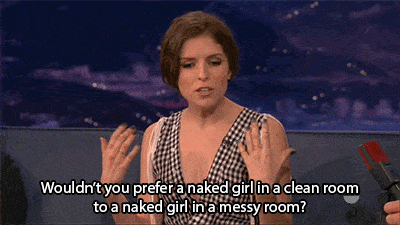
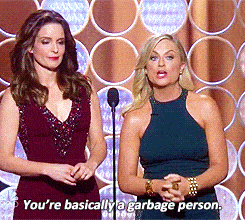
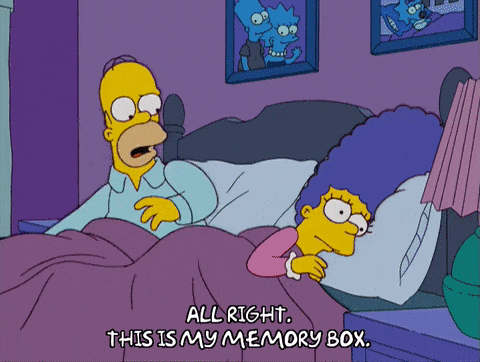





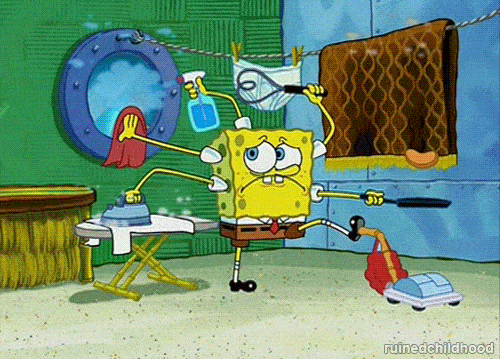
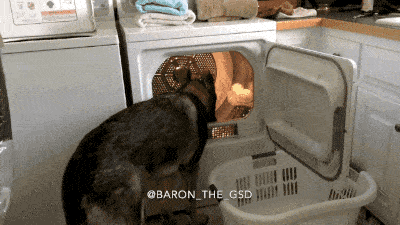

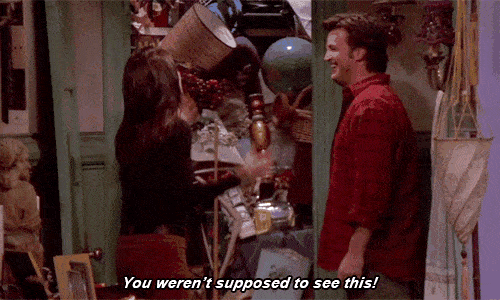



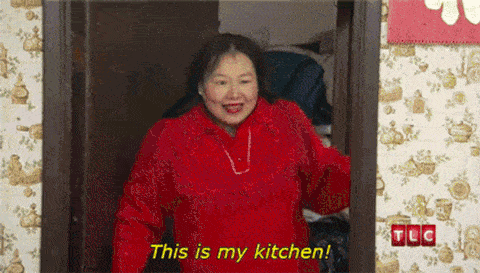
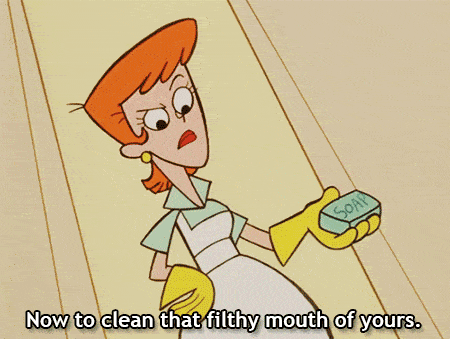



Love all these tips! Love the psych behind why clutter makes us stressed, unhappy and unproductive. I see this in family members who tend to hoard or can’t purge regularly. Visiting from Creatively Crafty party.
Yeah! When I first started researching this, I was surprised, but then I thought, that makes TOTAL sense. My friend’s parents are really bad hoarders, and she was so stressed when she moved home – I think that’s why! (That and her mom was a liiiiittle overbearing, haha)